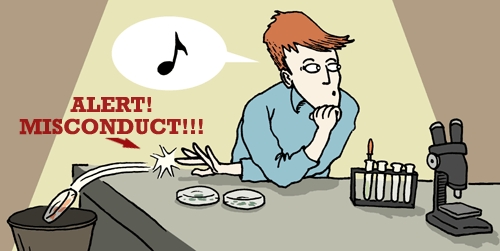2018-10-23 Recent Scientific Fraud In Cardiac Stem Cell Research, How Labii ELN & LIMS Can Help Avoi
2018-10-23

What Happened?
The world of pharmaceutical research has been rocked by the mid-November news that Harvard and Brigham have requested for the retraction of 31 cardiac stem cell research papers by the famous Dr. Piero Anversa.
He was one-time laboratory director at Harvard Medical School and Brigham and Women’s Hospital in Boston. Officials from the two institutions confirmed his studies based on the idea of treating damaged hearts with stem cells included fabricated and/or falsified data. This was in a statement to Retraction Watch and STAT earlier this October.
Dr. Piero Anversa and his team virtually started cardiac stem cell research in 2001 after claiming they had identified stem cells (c-kit cells) which supposedly had the ability to regenerate cardiac muscle. Their claim excited scientists across the globe although numerous research teams attempted and failed to reproduce their results. However, their work inspired the creation of many start-up companies targeting the development of new treatments for stroke and heart attacks. The National Institutes of Health notably funded a clinical trial in the regard.
Anversa’s work had earlier faced some antagonism from certain pros in the field like Jeffery Molkentin, of the lab at Cincinnati Children’s back in 2014. Also, a study by the co-director of the Institute of Stem Cell Biology and Regenerative Medicine at Stanford University, Dr. Irving Weissman, among others concluded that bone marrow cells injected into cardiac muscles remain bone marrow cells
Nevertheless, the first major scenario that rang loud alarm bells about the research was a $10 million settlement in April 2017. The scientist was accused of submitting fraudulent data in order to secure federal research funding and Brigham and Women’s Hospital accepted to pay the settlement to the federal government.
Brigham made the settlement with the U.S Department of Justice, even though the U.S Office of Research Integrity which is in charge of investigations on research misconduct when it involves National Institutes of Health Funding, didn’t make a finding in the case. The relation between the settlement and this recent call for over 30 of Anversa’s papers to be retracted isn’t clear.
The Journals in which the 31 papers appeared have not been highlighted by Harvard and Brigham, but about 8 of his papers had previously been retracted and corrected. Many for failing to disclose conflicts of interest. The Circulation journal notably retracted on of Anversa’s papers in 2014.
The school and hospital started reviewing the popular doctor’s publications in January 2013 and his lab at the Brigham and Women’s Hospital was closed as he departed later in 2015 with increasing questions popping up about his research. At one point, Dr. Piero Anversa and his colleague Dr. Annarosa Leri even unsuccessfully sued Harvard and Brigham for alerting journals to issues in the work in 2014.
As the events keep developing, spokeswoman for the AHA (American Heart Association/ American Stroke Association), Suzanne Grant, highlighted the organization’s role in the retraction and correction of a 2012 paper co-authored by Dr. Anversa in 2014. She added that the AHA was evaluating the findings of Harvard and would once again take all necessary action.
One thing everyone in and out of the industry agrees upon is the need for transparency. Dr. Harlan Krumholz, a cardiologist at Yale even told STAT and Retraction Watch that, “the scientific community deserves to know what the findings were, the reasons why the papers were retracted, and the recommended way forward”. Furthermore, the million-dollar question is, ‘What happens to work based on Dr. Anversa’s work?’.
How Labii ELN & LIMS Can Help Avoid Similar Problems in The Future?
To avoid the fraud and the wasting of tax payer’s money, the NIH and other grant organizations should check the applicant’s raw research notes on their grant applications. I also urge the publishers to make it a requirement for scientists to provide the raw experiment notes as a compulsory attachment for every publication.
With technology presenting new solutions to many global problems, Labii’s Electronic Lab Notebook (ELN) and Laboratory Information Management System (LIMS) is perfectly equipped to make the above suggestion possible and to help scientists prevent scandals like this shocking call for more than 30 research papers to be retracted. The Electronic Laboratory Notebook software simplifies data management and guarantees security, as well as transparency, in so many ways.
Labii ELN & LIMS takes away the control of data from individuals as the software provides a Unique ID to all records. The ID will incremental by itself as the research progresses and each experimental note created is given its unique ID to avoid any fraud from manually faking the notes.
With Labii, no data can be deleted. Labii keeps all results of scientific research, whether wrong or right. This allows for pinpoint accuracy and transparent tracking.
Labii keeps track of all user activities. The software records every single change, making data falsification practically impossible.
Labii creates a new version for every change which is stored, facilitating the tracking process of research.
Every tech enthusiast must be aware of the amazing security of blockchain technology which is making waves in cryptocurrency over the last decade. Labii ELN & LIMS makes use of blockchain technology security to make hacking impossible. This feature also makes the manipulation of historical data impossible.
The world of research would do well with some transparency and Labii ELN & LIMS brings a fantastic way out. To learn more, schedule a meeting with Labii representatives (https://call.skd.labii.com) or create an account (https://www.labii.com/signup/) to try it out yourself.
Shirley Scott
Last updated
Was this helpful?